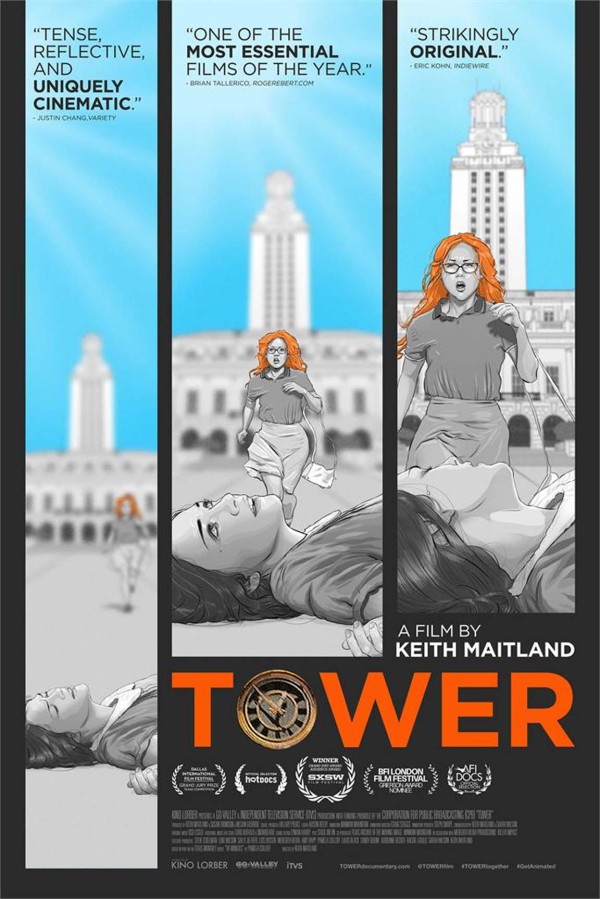FRESH AIR: In August 1966, a student and former Marine ascended to the top of the tower that housed the University of Texas’ main library and began shooting at people below. He killed 14 people on the campus and wounded 31 more. Hours earlier, Whitman had killed his wife and mother in their homes. He was eventually shot to death by police. A 15th victim died in 2001, from injuries sustained in the attack. Now the new documentary Tower recreates that 96-minute-long massacre in an original way, using archival film and new interviews with an animated portrayal of the events. Keith Maitland, who directed the film, interviewed hundreds of people who were on campus that day to learn more about the incident.
“One of the things they always want to make clear is how unprecedented this was … ” Maitland tells Fresh Air‘s Dave Davies. “We live in a world today where you hear a loud sound that sounds like a gunshot in a public space and it doesn’t take long to kind of assume that there’s something happening that you don’t want to be a part of … to run and hide. But in 1966, on this hot Monday morning here in Austin, people were surprised, they were confused, and so it made the sniper’s job a lot easier to catch people unaware.” Claire Wilson James, a pregnant, 18-year-old incoming freshman, was the first person the gunman shot from the tower. In a separate interview, she tells Davies she believes the shooter was aiming at the baby.
She survived the incident, but lost both her unborn baby and her boyfriend, Tom Eckman, who died instantly after being shot. In the years that followed, she avoiding speaking about the massacre. At the University of Texas, classes were canceled for just one day to allow for clean-up, and then business resumed as usual. There was no mention of the shooting at that year’s graduation, or in the school yearbook. “It really was pushed aside. … People were encouraged to move forward and not linger in the terrible tragedy of that day,” Maitland says. “Looking back, I think that was a mistake, and I think that cost people, people who were there that day, people who were traumatized by the event, it cost them an opportunity to deal with that trauma.” MORE

